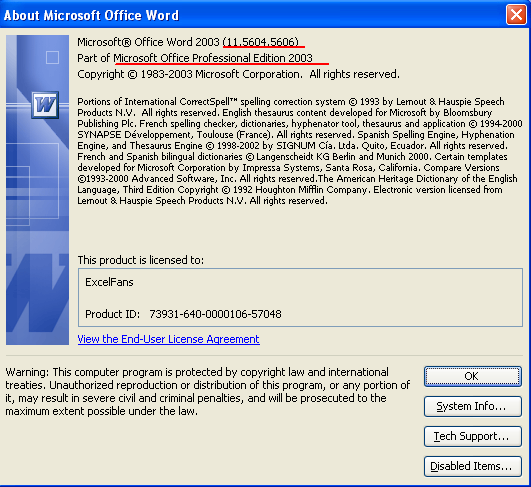
- #Cannot install wordfast classic on word 2000 software#
- #Cannot install wordfast classic on word 2000 windows#
I won't be affected if SDL uses the ribbon, because I only work with DVX2, and like Selcuk I have never seen a ribbon in it, so I'm not sure what Stefan is referring to. But the real killer for me is the horrible waste of vertical screen space. I prefer the usability in the old menu bar as in Word 2000/2003, and I always use Word 20 with the Ubit menu utility which simulates the old menu structure.

Do the people who designed the Microsoft ribbon ever do any WORK with the dratted thing? Top third? To be fair, on my 22" desktop screen the ribbon in Word 2007 takes up just under a quarter of the height, but I'm sure it is well over a third of the height on my 10" netbook. In an age of wide-format screens with limited screen height, I can't imagine why anyone in their right mind should want to carve away the top third of the screen for an airy-fairy ribbon instead of a decent menu bar, giving me a ridiculous horizontal sliver of screen space to work in. My main complaint about the ribbon is ergonomical. The only error SDL did here was not to introduce it right from the beginning in Studio 2009. Personally I think it's not an error to introduce the ribbon now, but a long overdue step. But when they have to work in Word 2003 again for a specific project, they are usually surpirised how bad the old toolbar system actually was compared with the ribbon. I know a couple of people who hated the ribbon when it we introduced in MS Office years ago. In fact Microsoft studies based on real world user data prove that new as well as old shool users find what they want faster and more intuitive. It's an excellent way to present complex feature offers in a structured and organized system.
#Cannot install wordfast classic on word 2000 software#
There's a reason why so many software companies have adopted this idea for their UX.
#Cannot install wordfast classic on word 2000 windows#
Other systems may have slightly different methods for making hidden files and folders visible to the file explorer.I'm a big fan of the ribbon interface idea and actally it's adopted not only in MS Office but also in many, many other software like AutoCad, AuthorIT, Madcap Flare or Déjà Vu - just to name a few very popular ones, beside the adoption throughout the whole windows system itself. To do so in Windows Explorer or in Windows' File search utility, use the Tools/Folder Options menu, then View then Hidden files and folders and make hidden files and folders visible. If this is the case, set your Windows Explorer or your File search utility to browse and display hidden or system folders. Operating systems have hidden or system folders, and Ms-Word's Startup folder may be located in a hidden folder (perhaps like C:\Documents and Settings\.). Thus, all it takes to un-install WFC is to delete wordfast.dot.

WFC does not modify your system in any way, does not add/remove entries to your registry base, does not add/remove fonts, does not create hidden files for protection or for hidden purposes, does not add/delete folders, does not add/remove any DLL etc.

.jpg)
Using your system's file search utility (Windows: "Windows" key + F) search for WORDFAST.* then delete all WFC files that appear. Ancillary files (setup etc.) are removed on request.Ĭlose Ms-Word. Only the program (wordfast.dot) is removed. In the last tab (the "About Wordfast" tab, which a question mark ? ), click the Remove WFC button. Start the main Wordfast Classic window by clicking the last icon in the toolbar, or press Ctrl+Alt+W.


 0 kommentar(er)
0 kommentar(er)
